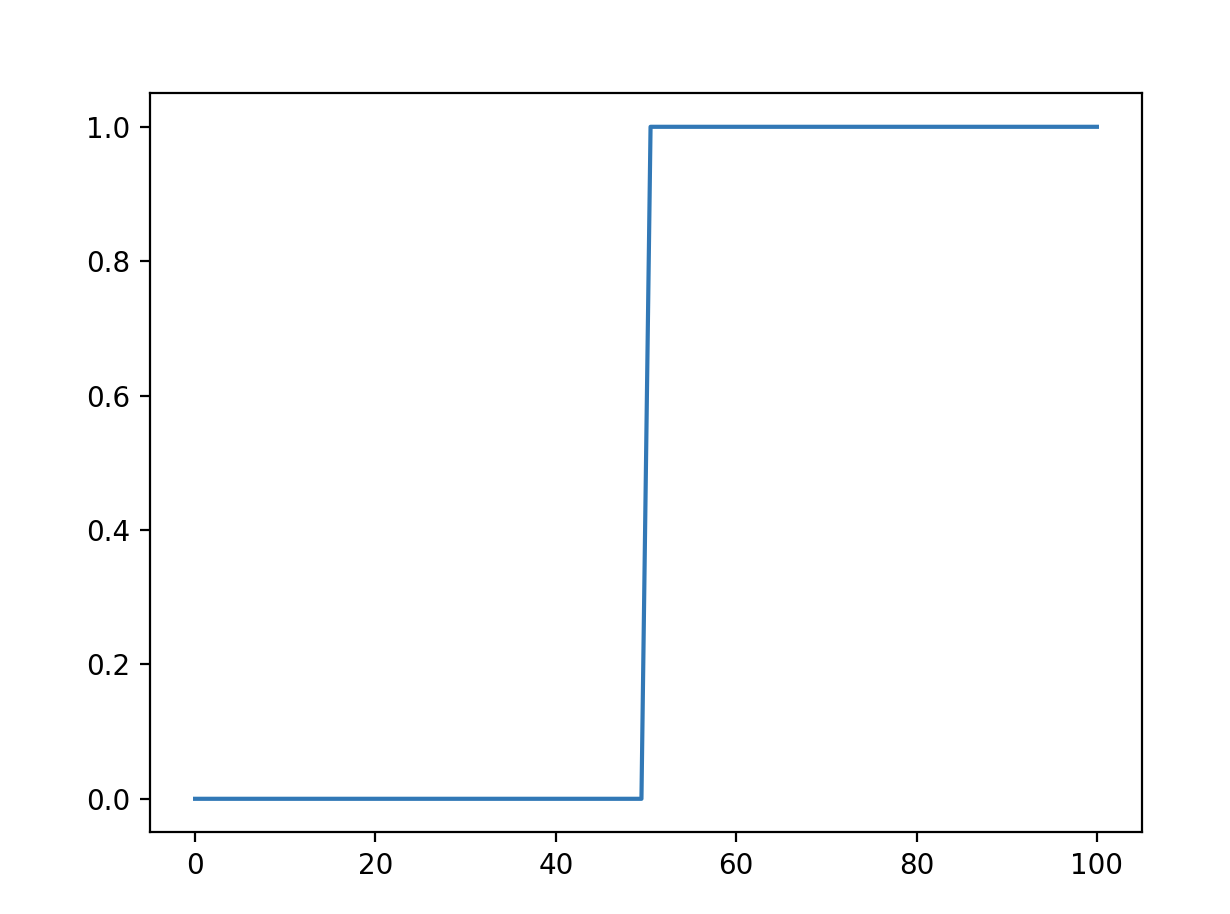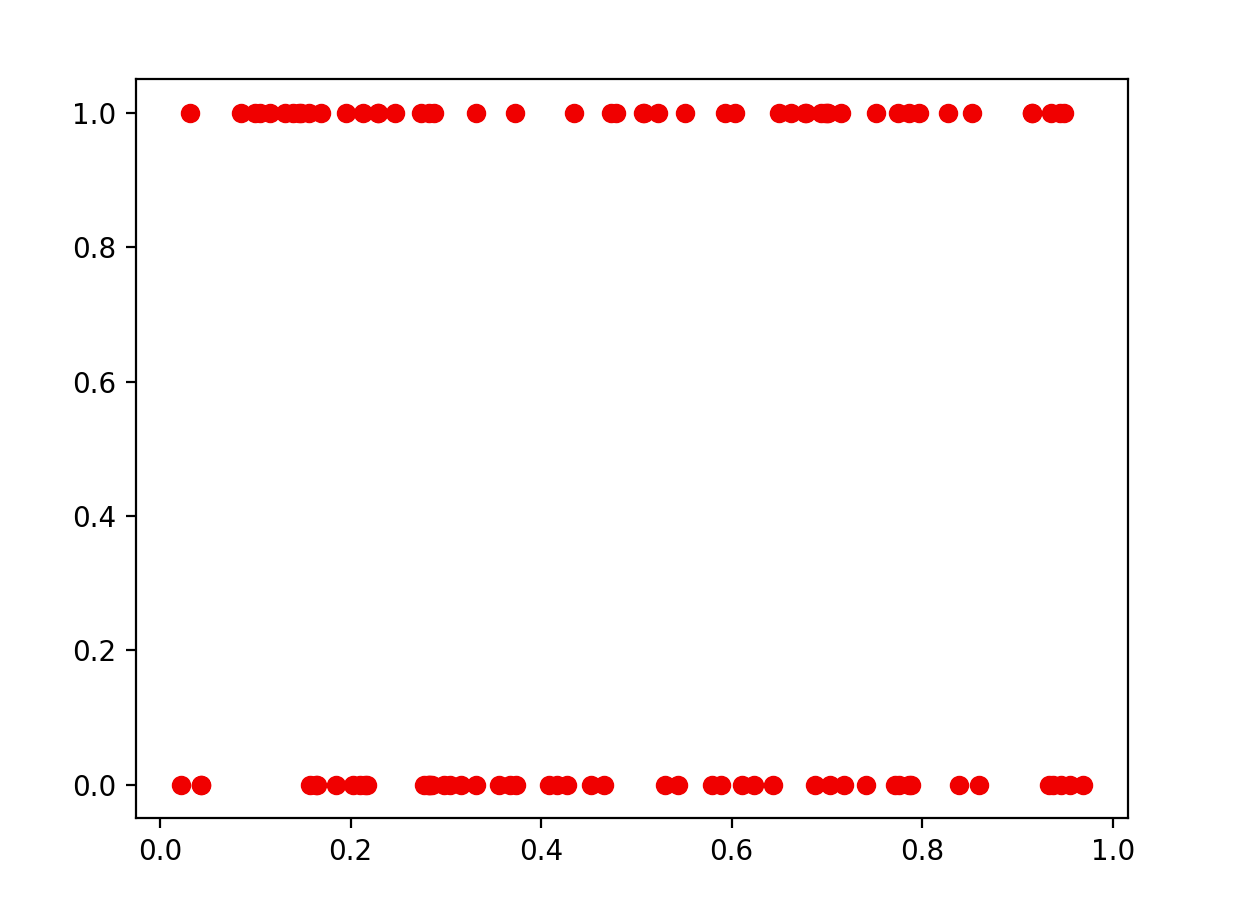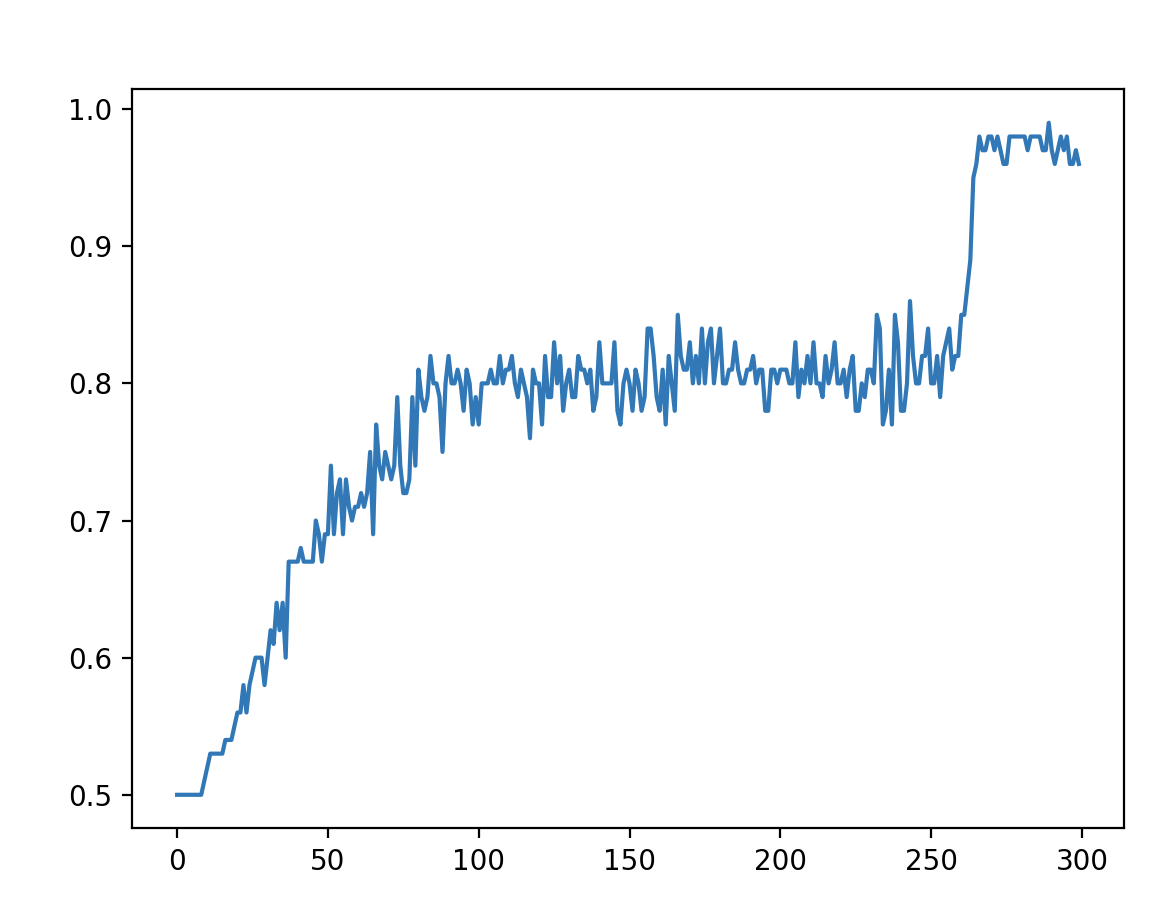Basic Keras NN
wnowak10
After reading Michael Neilsen’s awesome book on neural networks, I took a lot of time learning to implement some basic ones in Google’s Tensorflow. This was kinda a pain for a novice like me. So I recently started playing with Keras, which makes sense, as it is a higher level library meant to be run on top of Theano or Tensorflow (and more user friendly, as a result).
I thank Dan Does Data for his helpful youtube series, here.
Just to make sure I could get something up and running, I created some toy data with a strong signal, and some noise, and then tried to fit an LSTM model. Why LSTM? No real reason, other than I wanted to become familiar with this architecture. But there is no long term signal in my data that would make the “memory” component of an LSTM relevant. Nevertheless…
Data Creation
# source activate py35
import numpy as np
import matplotlib.pylab as plt
x=np.linspace(0,100,100) #create sequence 0-100
a=np.random.rand(100) # create random noise
y=x>50 # define output! if x>50, y = 1, else 0
y=1*y # convert boolean (T/F) to 1 or 0
Plot of x and y (here is the signal)

Plot of x and y (here is the noise…just to add some difficulty to this problem)

Data preproccessing
Pretty minimal, but some things we need to do before Keras.
# convert y to one hot
n_values=np.max(y) + 1
y=np.eye(n_values)[y]
A way to convert numpy list to one hots, from K3–rnc. This is easy to do when you are trying to convert a pandas df using pd.getdummies()…but I hadn’t learned an easy way to convert an np array to dummies…thanks K3–rnc!
data=np.zeros([100,2,1])
data[:,0,0]=x
data[:,1,0]=a
Here, we are following Dan Does Data’s likely improper setup, but whatever. We need to have 3 dimensions for a Keras LSTM. Jason Brownlee explains this:
“The LSTM network expects the input data (X) to be provided with a specific array structure in the form of: [samples, time steps, features].
Currently, our data is in the form: [samples, features] and we are framing the problem as one time step for each sample.”
So we reshape our input data…although there is some discrepancy. Brownlee says it wants [samples, time steps, features]…but if I reshape input to [100, 1, 2], it won’t compile. However, the shape above [100,2,1] works. Hmm.
Also, as I understand it, the time step aspect here has to do with the fact that I am fitting a model with memory. It says, how many samples do you have for each time period? In this case, we can think of having 100 samples in 1 time period, or 1 sample in 100 time periods. Given the above confusion, I am not sure how Keras is currently interpreting this, or if it makes a difference….help?
Model fit
We fit an LSTM model with 10 hidden nodes. We then add a dense layer, which takes each of our 10 nodes to one of 2 output predictions, using a softmax activation. Adding the ‘metrics’ argument to the compile function allows us to visualize accuracy on training data easily, which is awesome.
num_features=2
model = Sequential()
model.add(LSTM(10,input_shape=[num_features,1]))
model.add(Dense(2))
model.add(Activation('softmax'))
sgd=SGD()
model.compile( loss='categorical_crossentropy',
optimizer=sgd,
metrics=["accuracy"])
h=model.fit(data, # train data
y, # train labels, in one hot
batch_size=50,
nb_epoch=300, # how many epochs to train
verbose=1 ) # show progress
One question I had was about batch_size…I know what batch training means for a normal NN, but what about in RNNs or LSTMs?
Results
Here, we see that, after 300 epochs, we’ve sorted through most of the noise and learned the rule, gaining ~100% accuracy.

Full code
import numpy as np
import matplotlib.pylab as plt
x=np.linspace(0,100,100) #0-100 linearly
y=x>50 # define output pretty decisively!
y=1*y
# plt.plot(x,y)
# plt.show()
a=np.random.rand(100) # noise
# plt.plot(a,y)
# plt.show()
# convert y to one hot
n_values=np.max(y) + 1
y=np.eye(n_values)[y]
# source activate py35
# data=np.zeros([100,1,2])
data=np.zeros([100,2,1])
data[:,0,0]=x
data[:,1,0]=a
from keras.models import Sequential
from keras.layers.core import Dense, Activation
from keras.layers.recurrent import LSTM
from keras.optimizers import Adam, SGD
num_features=2
model = Sequential()
model.add(LSTM(10,input_shape=[num_features,1]))
# model.add(LSTM(16,input_dim=1))
model.add(Dense(2))
model.add(Activation('softmax'))
adam=SGD()
model.compile( loss='categorical_crossentropy',
optimizer=adam,
metrics=["accuracy"])
h=model.fit(data, # train data
y, # train labels, in one hot
batch_size=50,
nb_epoch=300, # how many epochs to train
verbose=1 ) # show progress
x=model.predict_classes(data)
# plot accuracy over training epochs
plt.plot(h.history['acc'])
plt.show()